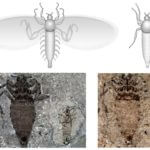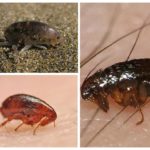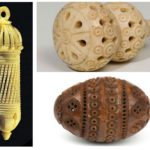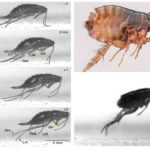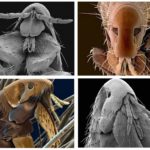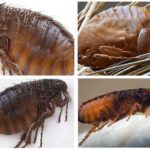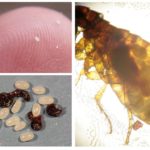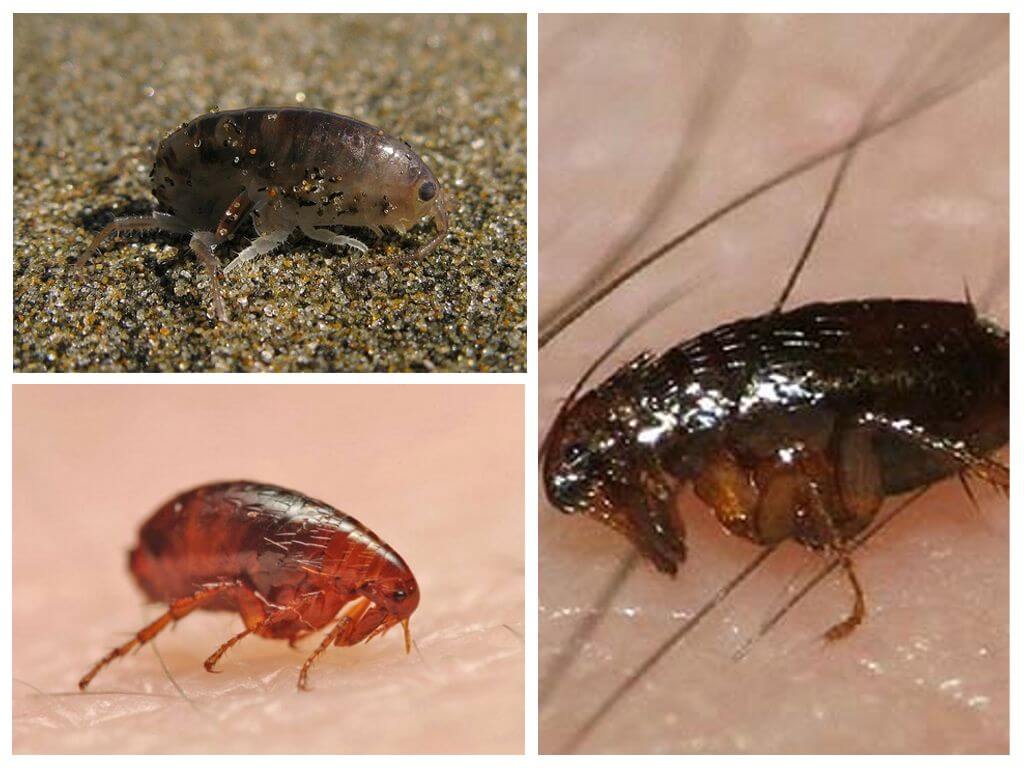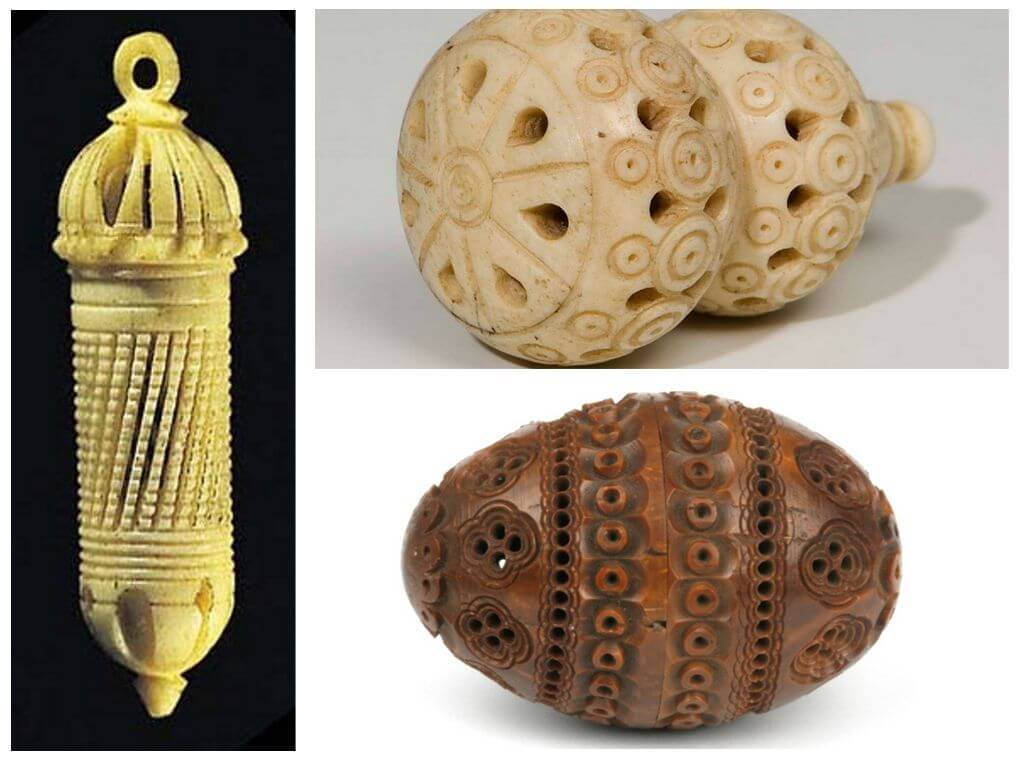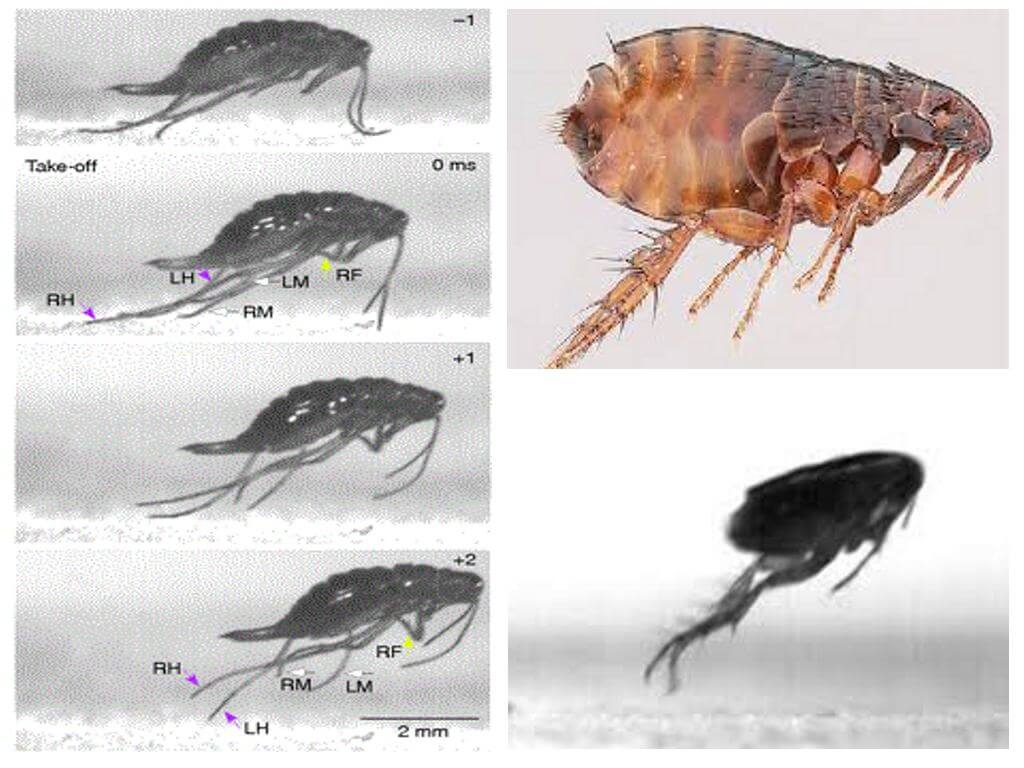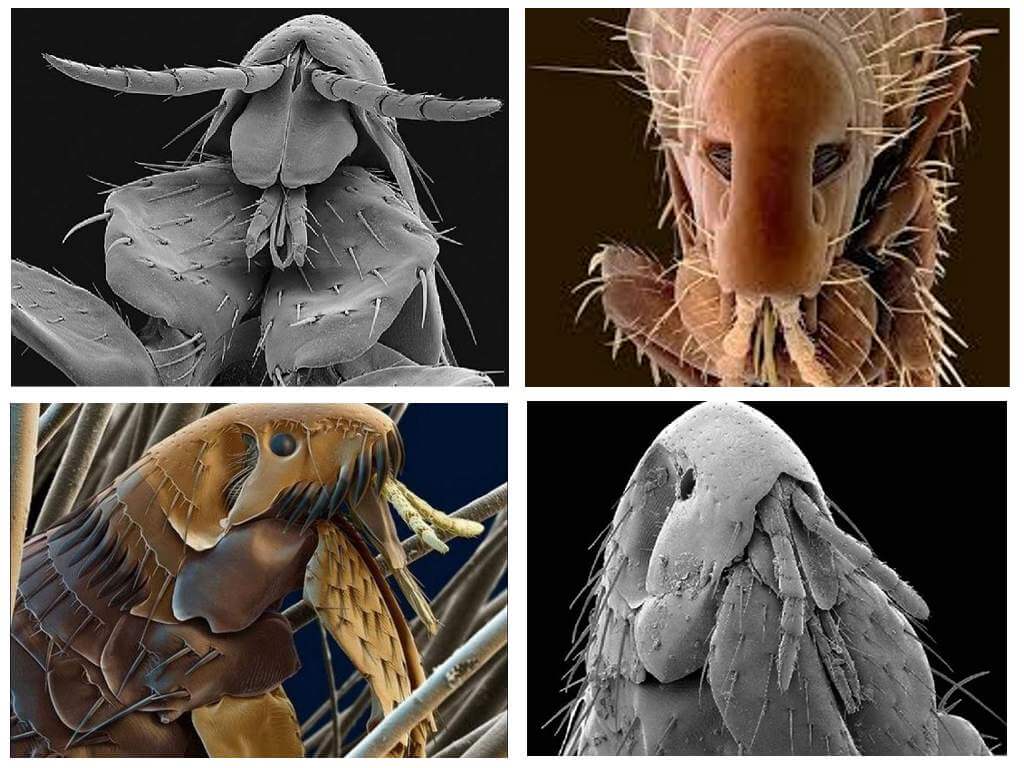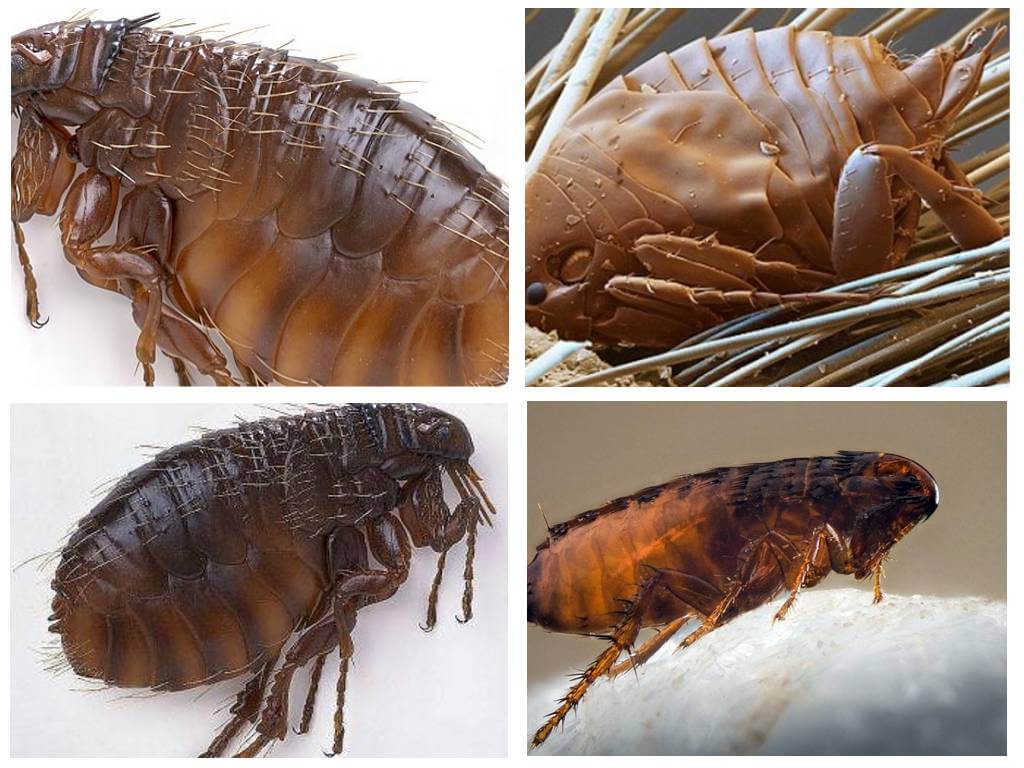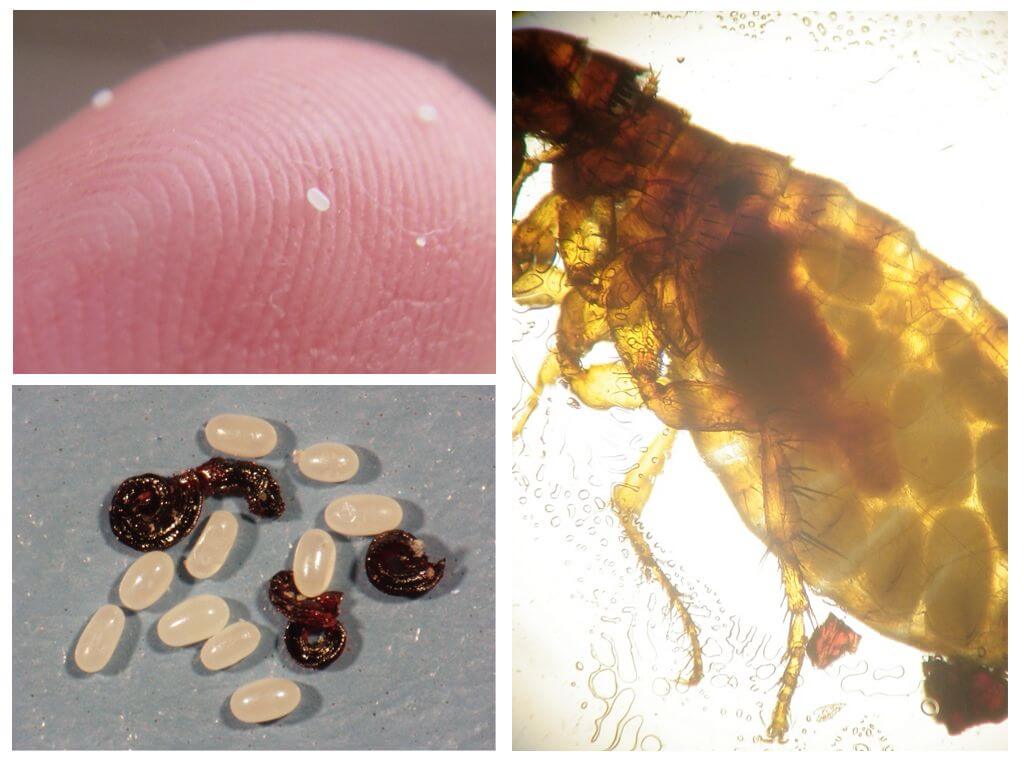What fleas look like in the photo: their varieties and structural features
Content
- Prehistoric fleas
- Flea species
- Blokhovki
- Flea jump
- Flea under the microscope
- Flea closeup
- Flea eggs
Fleas - A large detachment of blood-sucking (hematophagous) insects, which includes more than 2000 species of fleas. In the sediments of the last epoch of the Paleocene period, prints of relict arthropods are found, which indicates the antiquity of these insects.More than 30 million years ago, new types of warm-blooded animals — horses, pigs, rabbits, camels, etc. — appeared on the planet with a cooling of the climate.
Together with them, a species of blood-sucking insects appeared, which parasitized on warm-blooded animals. But even earlier, in the Cretaceous period on the pterosaurs “false fleas” parasitized - giant insects very similar to modern microscopic parasites. Look like a flea era flying dinosaurs can be seen in the photo.
Where do fleas live
Nature has created fleas perfectly adapted to parasitism. Over the centuries-old history of planet Earth, these insects have not changed significantly. Sealed in pieces of Baltic amber relic bloodsuckers do not differ from the modern variety of fleas in the house.
Representatives of fleas are found everywhere where there is food. Parasites mainly live in the tropical and subtropical zones, they are widely represented in the temperate, and certain species of blood-sucking insects are found at the pole.
Interesting!
Professor Steven Chown from the University of Stellenbosch in South Africa published an article in which he notes with alarm the colonization of the Antarctic Peninsula by uncharacteristic for the natural environment species of flora and fauna.Among the species introduced to Antarctica and firmly established here are two types of flea springtails. They live in the upper soil layer and feed on organic plant residues.
The most common types of fleas
Fleas are classified by type of hosts for:
- human (pulex irritans);
- feline (ctenocephalides felis);
- canine (ctenocephalides canis);
- rat (Xenopsylla cheopis).
This does not mean that parasites have a species preference. Human fleas with the same pleasure bite not only domestic animals, but also wild ones. Only blood-sucking insects that parasitize bats are loyal to their owners. They are represented by an isolated and relatively small group of Ischnopsyllidae (bats fleas).
Only rare fleas are constantly on the victim's body. The rest of them live in beddings of holes, birds' nests, jumping on the owner, only to eat. What are fleas by habitat? They are divided into:
This division is conditional because the variety of fleas in the house includes all of these types. Earthen insects get into the dwelling of a person from basements, sandy ones are brought after walks in the coniferous forest, from the beach.They settle in the cracks of the floor, carpets, for plinths. Linen love to dwell in the folds of bedding, clothing. The name reflects the location of the parasite in the room or in nature. But often the kind of sand "vampires" is no different from those that used to bite a cat or a dog.
Interesting!
The folds of chic outfits and high hairstyles of ladies and gentlemen of the Victorian era were infested with blood-sucking insects. For their catching, they invented special devices - fleas, elegant openwork boxes into which they placed the bait. Wool or cloth was moistened with honey, resin, and a drop of blood was dropped. Insects crawling inside stuck to the filler.
Due to the fact that bloodsuckers easily change their hosts, the bubonic plague carried by rat fleas in the 17th century claimed the lives of more than 20% of Londoners. About 55 species of bloodsuckers are carriers of the plague bacillus. For the first time the pandemic of the plague was described in documents dating from 540. Then, in Constantinople, the “black death” claimed 5-10 thousand people daily. The Bible also tells about the plague.
Flea description
Fleas are ideally suited to their lifestyle and nutrition.The flattened laterally body is provided with spikes and bristles that help to firmly hold among the wool and feathers. Flat fleas briskly scurry over any surface, they are very difficult to comb or shake. On the head, abdomen and chest are serrated plates - ctenidia, which provide additional “anchoring” of parasites.
“Do fleas have wings? What helps them to make such giant leaps? ”- these questions have bothered scientists for centuries. And only fifty years ago, British researchers were able to capture and see in detail what fleas look like when they jump using a high-speed movie camera. The flea does not have wings, which determined its ideal adaptation to ectoparasitism, but the unique structure of the limbs ensures its “jumping ability”.
The photograph shows a prominent feature of the structure of the body of the insect. His hind legs are longer than body. These powerful limbs help the pest jump high, hiding from pursuit or jumping on its victim.
Interesting!
Specialists in neurodynamics and neurobiology M. Burrows (Cambridge) and G. Sutton (Bristol) have figured out the secret of flea jumping.Its limbs act on the principle of a catapult, “shooting” the body to a height of 30-50 cm. With the help of claws, the insect blocks legs, slowly crouches, accumulating elastic deformation energy in a special structure, which consists of rezilin protein, available only in jumping insects. When jumping, this structure releases up to 99% of energy, providing a powerful push. Acceleration, which develops a unique mechanism, is 100 times greater than the acceleration of gravity.
The wings that are reduced in a flea also help her to jump, ensuring the synchronism of repulsion from the surface. The legs of a flea are three pairs, like all insects. Middle legs help with jumping and forward movement.
A flea under a microscope strikes with a variety of patterns on the hips of the hind legs. Cutiloglyphic allows differentiation of species of bloodsucking insect. The special structure of the legs of a flea allows you to fold them in a calm state like an accordion, without interfering during feeding.
What does a flea mouth apparatus look like under a microscope
A close-up flea is a terrifying sight. In the photo view of the insect full face. The head is small, sloping.Behind simple eyes there are antennas, which the insect alone puts in special holes. Males with the help of antennae hold female during mating. This structure of the head provides deep immersion in the epidermis of the victim to get to the capillary. This is what a flea looks like in an electron microscope in profile.
The mouthpiece of the piercing-sucking type is clearly visible. The upper pair of stilettos gnaws through the skin, the lower widens the wound. The lower lip is a peculiar case for the sucking trunk. It also contains movable palpi - the organs of touch. On top of the mouth unit is covered with a head plate with sharp comb protrusions - ktenidiyami. The enzyme secreted by the insect's salivary glands prevents blood from clotting. Its insect bites do not mask anesthetic substances, like many blood-sucking brethren.
The abdomen, consisting of 10 segments, may increase as soon as the adult insect begins to feed. The fleas in the photo seem huge, in fact the size of the flea varies from 1 mm to 5 mm, but in females of some species the abdomen is hypertrophied and the insect can grow up to 10 mm.The biggest are white fleas - alakurt. So they are called because the eggs that ripen in the abdomen stretch it, making it almost transparent. Alakurt parasites in the long wool of sheep, but are found on other ungulates - roe deer, goats, gazelles, elks.
The structural features of these blood-sucking insects are also in the presence of a characteristic organ of the sensory organ only - pygidia. Localized on the 8th segment, the pygidium is endowed with tactile hair-like outgrowths of chitin (trichobothria), which capture air vibrations and inform the insect about the threat.
Unusual Flea Facts
Interesting facts about fleas are collected in the 6-volume edition of the "Catalog of the Rothschild fleas collection in the British Museum." The structure of the flea studied M.L. Rodshild, daughter of the famous Charles Rothschild, who collected the largest collection of these insects. It was she who first began to study flea jumping mechanism and fully described what they are.
Interesting!
The color of the cover of the "vampire" depends on the color of the animal's coat, on which the insect is parasitic. There are red, black, brown fleas.Insects of different ages differ in color - the darker the color, the younger the imago. Through the white or yellowish cover of the larvae, the brown digestive tract shines through, as they feed on coagulated blood from the feces of adult insects.
The weight of the blood that the bloodsucker drinks is 6 times the weight of the flea. Blood helps her not only to survive, but also to multiply. A hungry "vampire" falls into a lethargic state. But it is necessary to feel the approach of food, as the insect "comes to life" and jumps on the victim.
Females mate once in their lives, but produce 500-800 eggs. A well-fed female forcefully throws eggs, scattering them around. Household fleas lay eggs in carpets, animal litter, on their wool.
How to get fleas in the apartment
Parasites get into the apartment not only in pet hair. Types of fleas in the apartment are varied and presented. basement, falling to the lower floors from under the floor, bird's, penetrating from the attic, populated by pigeons. Household fleas - this is not a separate species, but those insects that hit the house.
Types of fleas and the fight against them are the subject of centuries of study. Danger of bloodsucking parasitesbiting a person in that they are carriers of a large number of dangerous diseases. So in the 20th century, in India there was the last recorded epidemic of the bubonic plague, the carrier of the pathogen of which became rat fleas.
Modern Pest Control, keeping homes clean eliminates the risk of pandemics in developed countries. But no one tool can completely destroy the parasites, if there is insanitary conditions in the dwelling. Therefore, you should keep your home clean, regularly inspect the animal living in the house for the presence of fleas. In case of their detection, immediately take measures to destroy them, using effective drugs for dogs and best products for cats. Also needed to process an apartment. In the presence of a large number of fleas, it is recommended to call specialists who will conduct disinfection using professional tools.

